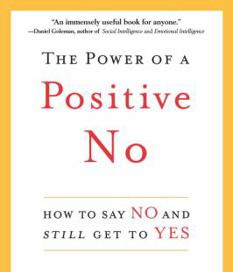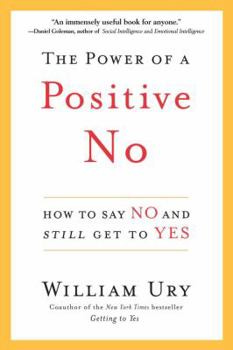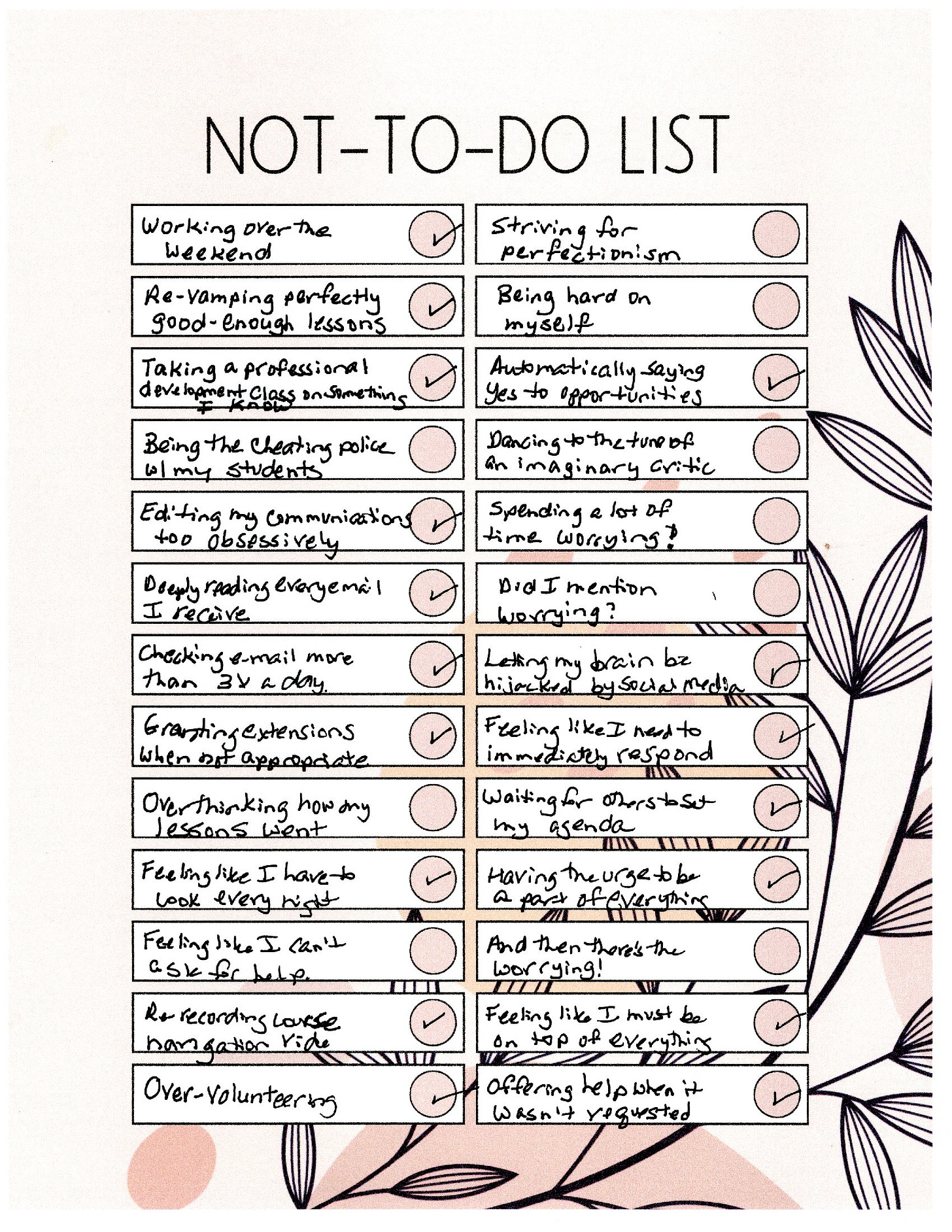My "Not-To-Do" List
The Power of a Positive No: How to Say No and Still Get to Yes by William Ury
At the start of every school year, I map out a week-by-week To-Do list. I do this to ensure I meet all obligations and expectations. It’s what all the cool kids “good teachers” are doing right about now. But in my effort to do things differently this year, I had a sudden flash – How about also keeping a Not-To-Do list?
On this list will be —
things to which I commit to saying “no”
a record of the requests I have successfully resisted
For example, I have a commitment of not reading email more than three times a day, and that is on my list to remind me. In addition, today I moved “re-record my course navigation video” from my To-Do list to my Not-To-Do list. A good teacher would record a new video every semester. But a good enough teacher will realize the old video will do just fine, thank you.
I realize I have to say no to some requests/demands/opportunities/fascinations/rabbit holes in order to say yes to more important goals in life. And this lesson is driven home in the book The Power of a Positive No: How to Say No and Still Get to Yes, by William Ury. This book outlines a three-step process for saying a positive No in order to stay focused on what really matters.
Ury, who is not a psychologist but holds a PhD in social anthropology, is the co-founder of Harvard’s Program on Negotiation and has nearly 50 years of experience in conflict negotiation across the globe. But, although this book was not written by a psychologist, learning to say no has psychological benefits indeed. Therapist Nedra Glover Tawwab in her book Set Boundaries, Find Peace writes, “Based on my experience with clients, the biggest trigger for anxiety is the inability to say no.”
Ury’s process has three main components that he refers to as Yes! No. Yes?
Yes! Start by saying Yes to yourself and what is important to you. There’s an underlying reason for why you want to say No to something or someone, and finding a foothold in that reason is the first step in delivering a positive No.
No. The next step is to deliver a matter-of-fact, but respectful, No.
Yes? The final action is to extend an invitation to reach agreement or maintain the relationship.
Simple, right? Well, there actually are multiple ways this process can go all sorts of cattywampus, and the book is filled with tips for making each step work. For example, Ury explains how to uncover your own interests when preparing to say no. He also gives specific verbiage to use when crafting a No, such as -
No thanks
I have a policy . . .
I have plans
Not now
I prefer to decline rather than do a poor job
Ury outlines how to have a Plan B in case the other does not accept your No and how to manage potential unpleasant reactions to your No. Throughout the book, Ury addresses a variety of communication strategies that are not only useful when delivering a No, but in all aspects of social life.
Root your No in a deeper Yes - A Yes to your core interests and to what truly matters. (p. 27)
There are different kinds of Nos, and Ury mostly addresses a No that is delivered to another person. But for some of us, the person we have to say no to is ourselves. And the book still works in this scenario.
For example, I am what might be considered an opportunity hoarder. If something sounds like it might be fun, beneficial, educational, good-for-me, put me in good stead with others - sign me up! Following Ury’s three step process, I can say no sometimes in order to say yes to the things that really matter. For me, what matters most is family, friends, spirituality, physical and mental health, teaching, work contributions, traveling, learning, creating, and giving back. I am learning to base my Yeses on alignment with these goals. It’s an ongoing quest . . .
Only by saying no to competing demands for your time an energy can you create space for the Yeses in your life, the people and activities that really matter the most to you. (p.19)





